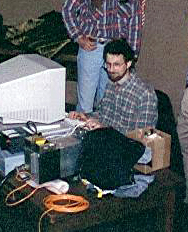Career
David Rabinowitz has built CCD cameras and software for the detection of near-Earth and Kuiper belt objects, [1] and his research has helped reduce the assumed number of near-Earth asteroids larger than 1 km by half, from 1,000–2,000 to 500–1,000. [2] He has also assisted in the detection of distant solar system objects, supernovae, and quasars, thereby helping to understand the origin and evolution of the Solar System and the dark energy driving the accelerated expansion of the universe.
Collaborating with Michael Brown and Chad Trujillo of the Quasar Equatorial Survey Team, he has participated in the discovery of several possible dwarf planets such as 90377 Sedna (possibly the first known inner Oort cloud object), 90482 Orcus, [3] Eris (more massive than Pluto [4] ), Haumea, [5] and Makemake, [6] though no-one would get credit for Haumea.
Together with Tom Gehrels of the University of Arizona and his Spacewatch team, Rabinowitz discovered or co-discovered other astronomical objects including 5145 Pholus [7] – a Centaur, credited by the MPC to Spacewatch [8] – and the unnumbered Apollo near-Earth object 1991 BA, which remains uncredited. [9]
This page is based on this
Wikipedia article Text is available under the
CC BY-SA 4.0 license; additional terms may apply.
Images, videos and audio are available under their respective licenses.
